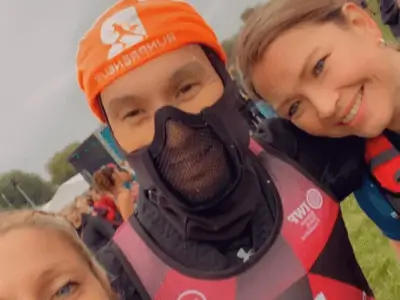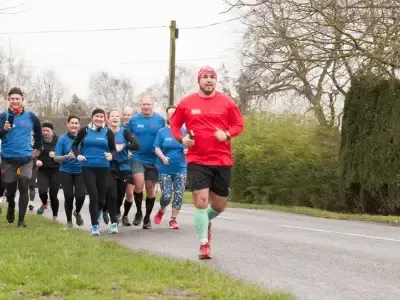Runpreneur Journey Blog
Embark on an extraordinary journey with the Runpreneur community. Discover inspiring stories, insider tips, and the transformative power of our global challenge. From first-time runners to seasoned athletes, our blog captures the essence of the Runpreneur movement, inspiring others to join the cause.

How Environmental Factors Impact Marathon Performance – My Approach to Race Day
How Environmental Factors Impact Marathon Performance –
My Approach to Race Day
Today, I want to share my experience and insights into how environmental factors like weather can affect marathon races, and how I prepare (or sometimes, adapt on the fly) when faced with less-than-ideal race day conditions. This topic has never been more relevant for me – with the Edinburgh Marathon looming in two days, I’m reflecting on hard-earned lessons from past events, including the Manchester Marathon just a month ago.
If you’ve been following my journey, you’ll know I’m on consecutive day 1818 of my ultimate ultramarathon challenge: run vlogging every day barefoot around the world to save children’s lives. The more people I reach, the more funds I can raise, so your support means everything.
Back to marathons and those pesky environmental factors. At Manchester, the temperature soared to 28°C. Even as a relatively experienced runner – it was my 14th marathon or ultramarathon – I made the mistake of underestimating how brutal heat can be. People were collapsing from heat exhaustion, myself included in the struggle. I left that race humbled, with a mental list of dos and don’ts on that occasion.
Now, preparing for Edinburgh, the forecast is… a mixed bag. The temperature looks perfect, a crisp 12°C – ideal for running. But the organisers have warned of possible 40 mph gusts of wind and a 50% chance of rain. They’re not even putting up some of the canopies because conditions look so dicey. As much as I’m feeling fit and my hamstring is finally recovered, these winds could seriously challenge my race pace.
In response, I’ve already tweaked my targets. Instead of gunning for a 3:28–3:32 finish, I’m pragmatically pushing that to 3:33–3:37, allowing myself flexibility if the wind becomes a drag – quite literally. If it’s not as bad as projected, I’ll stick with the original plan, but I’m preparing myself mentally to go with the flow, all based on how the conditions unfold.
The key takeaway? No two marathons are ever the same – thanks largely to the environment. Weather and terrain don’t care about your PB ambitions. Having a contingency plan and adapting your expectations on the day is absolutely crucial. So many runners show up expecting perfect conditions and a personal best, only to have wind, heat, or rain knock them off course. Even with top-notch training, it might not be your day if the weather isn’t with you.
For me, the mindset is to do the best you can with what you’ve got, learn from each experience, and come back fighting. If you’re training for a marathon or any endurance event, take the time to consider the environmental factors and build a flexible plan – don’t let unexpected weather ruin your race or your motivation.
I love hearing from others about their race day strategies, especially when it comes to battling the elements. Drop me a message or comment if you’ve had similar experiences or tips to share.
And if you believe in my mission – saving children’s lives one barefoot step at a time – please subscribe, share, and help spread the word.
Stay positive, stay happy, and see you on the next run!

Kevin's 40,075km Challenge: Raising £1 Million for Children
Meet Kevin, a dedicated Runpreneur who embarked on an extraordinary journey to raise £1 million for children in need. Over the course of his 40,075km challenge, Kevin's unwavering determination and passion inspired thousands to join the Runpreneur movement.

Runpreneur Vlogging: Capturing Kevin's Journey
Experience the Runpreneur challenge through the lens of Kevin's video diary. Witness his ups and downs, the camaraderie of the community, and the transformative power of running for a cause. Dive into the visual stories that capture the essence of the Runpreneur movement.

Empowering Children, One Step at a Time
As Kevin logged every kilometre of his 40,075km challenge, the true purpose behind his journey came into focus. Each step, each bead of sweat, fuelled essential healthcare, education, and nutrition programs for children in need around the world.

The Transformative 4x4x48 Challenge
Experience the thrill and personal growth of our iconic 48-hour running event. Witness the determination and resilience of Runpreneurs as they push their limits, one mile at a time.

Runpreneur Vlogging: Capturing the Journey
Dive into the visual stories of our Runpreneurs as they document their experiences through engaging video logs. Witness the challenges, triumphs, and moments of camaraderie that define the Runpreneur spirit.





















